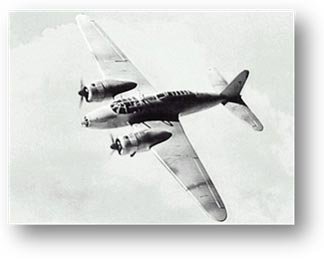Mitsubishi Ki-21, where Ki comes from a Japanese word “Kitai” meaning airframe, was a Japanese bomber used during Second World War. Mitsubishi won a production order in November 1937 from Nakajima’s Ki-19 prototype to meet an Imperial Japanese Army requirement for a four-seat bomber that would have a maximum speed of at least 249 mph (400 km/h) and which could fly continuously for more than 5 hours. Very few twin-engine bombers anywhere in the world had the capability to match such performances. The Ki-21 was later recognized as the best bomber in Japanese service during World War II as it fulfilled the Japanese Imperial Army’s demand efficiently.
It first saw combat operations during the Second Sino-Japanese War where it participated in the Nomonhan Incident, and in the first stages of the Pacific War, including the Malayan, Burmese, Dutch East Indies and New Guinea Campaigns. Its attacked targets include far reaching widespread areas such as western China, India and northern Australia. The allied forces had nicknamed it as “Sally” or sometimes as “Gwen”. It came into picture in 1939, and was seen in action up until 1945. Although, the aircraft had already been outclassed by American and English airplanes but it continued its service till the end of the war.
Clean design of Ki-21 gave it an excellent performance and incredible range. The system possessed two engines on a mid-mount monoplane wing assembly which was essentially all-metal construction with fabric-covered control surfaces, an oval-section fuselage with enclosed accommodation and a plain tail unit of cantilever construction. The cockpit was located just in front of the wing root which helped the pilot to get an upright view of the engines from either side. Its nose had a unique glass arrangement where small windows were fitted in such a way that made looking downward easier than upwards. As many as five personnel could be accommodated in the aircraft.
By the end of the war, the Ki-21 was used in the morbid delivery of suicidal kamikaze units to which the compelling internal payload was put to extensively lethal use. Its variants were Ki-21, Ki-21-Ia, Ki-21-Ib, Ki-21-Ic, Ki-21-II, Ki-21-IIa, Ki-21-IIb and MC-20-I.
Specifications
| Length: | 52.49ft (16.00m) |
| Width: | 73.82ft (22.50m) |
| Height: | 15.91ft (4.85m) |
| Max Speed: | 302mph (486kmh; 262kts) |
| Max Range: | 1,678miles (2,700km) |
| Rate-of-Climb: | 1,499ft/min (457m/min) |
| Service Ceiling: | 32,808ft (10,000m; 6.2miles) |
| Crew: | 5 |
| Hard points: | 0 |
| Empty Weight: | 13,382lbs (6,070kg) |
| MTOW: | 23,391lbs (10,610kg) |
| Engine(s): | 2 x Mitsubishi Ha-101 radial piston engines developing 1,500hp each. |
| Armaments: | 1 x 12.7mm Type 1 machine gun in dorsal turret 1 x 7.7mm Type 89 machine gun in nose 1 x 7.7mm Type 89 machine gun in tail gun position 1 x 7.7mm Type 89 machine gun in in ventral gun station 1 x 7.7mm Type 89 machine gun in left beam station 1 x 7.7mm Type 89 machine gun in right beam station Up to 2,205lbs of internal ordnance. |
